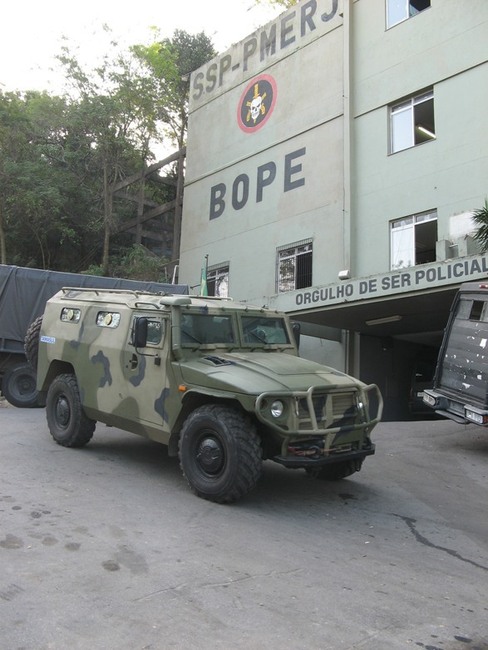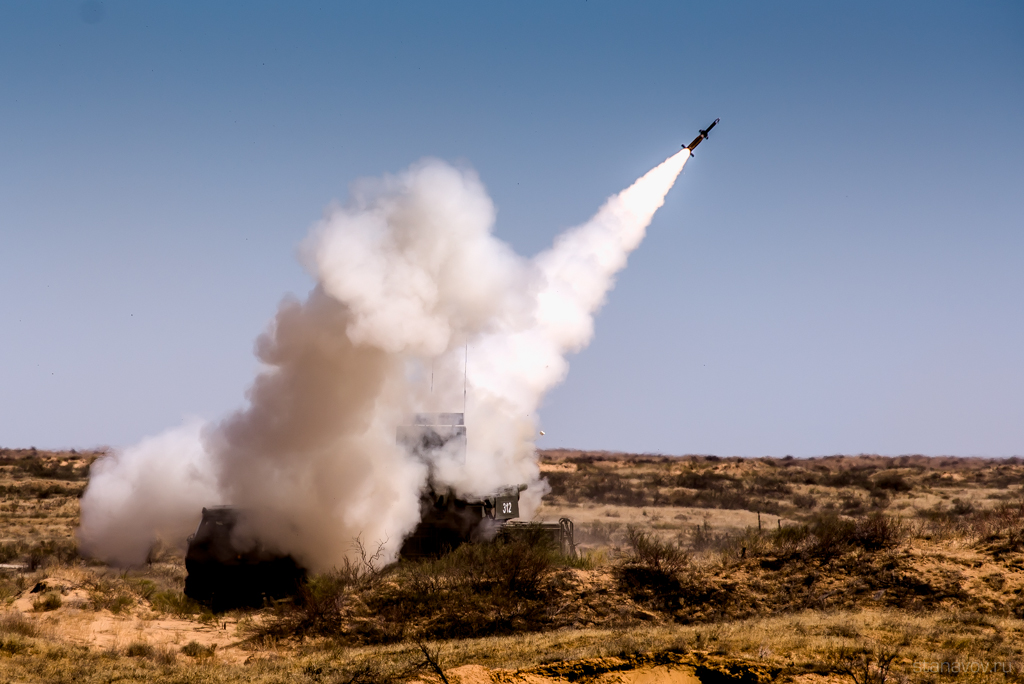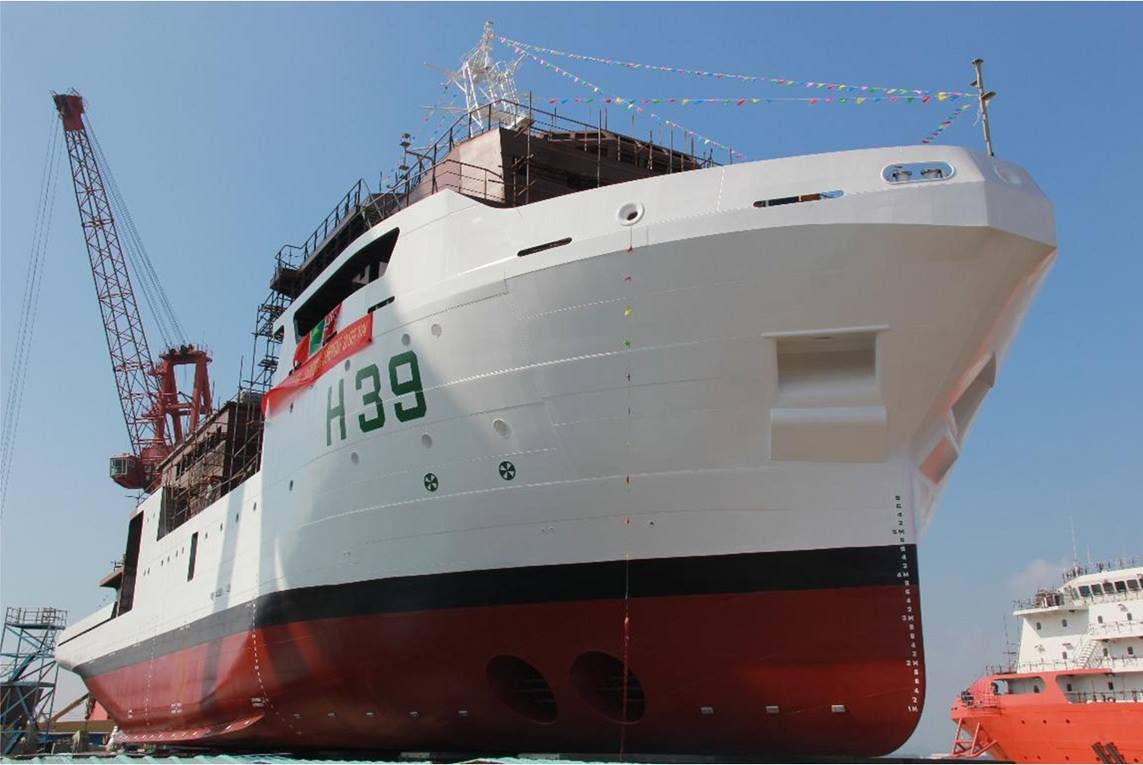In recent years, Latin American countries have drastically altered their military doctrines, most of them now willing to significantly diversify their military hardware suppliers and drop their absolute dependence on the United States and Europe. Their military budgets are also increasing. According to the Stockholm Peace Research Institute (SIPRI), from 2009 to 2013, Latin Americans increased allocations for military purchases by 10 percent, Brazil being the biggest arms importer. At the same time, Brazil is working hard to obtain advanced technologies for its own military products, attracting potential sellers, among which Russia and China seem to be in the running.
In the current geopolitical situation, Latin America, despite its relatively modest defense budgets, appears to offer Russia one of the most promising markets.
At the same time, there is China with its bulging scientific and technical potential, political clout and military power, which is eagerly seeking new outlets to sell its own military hardware. As a result, both Russia and China have basically targeted the developing countries of Asia, Africa and Latin America.
SIPRI expert Simon Wezeman believes that Russia should rush into Latin America due to the recent loss of several markets and problems with its key military-technical cooperation partners.
However, unlike Beijing, Moscow is already quite active on the Latin American arms market. The SIPRI data indicates that in 2013, China was the fourth largest weapons vendor in the world (USD 7.4 billion), while some time ago it was known to be a provider of rather imperfect replicas of Soviet systems). Meanwhile, in the same way as Russia was until recently exporting weapons to China, India and Algeria, China had been selling its products to Pakistan, Bangladesh and Myanmar. Currently, the PRC is unhurriedly building up its science and technology base and entering new markets, while its clear advantage lies in its economic diversification and the overall scope of its relationships everywhere, including Latin America.
"Allocating enormous sums to the development and modernization of enterprises and industries, the Chinese government is persistently working to dominate relatively new markets… As a result China is going to draw these countries in because the world's leading economy will always need huge resources." [1] To illustrate, note that between 2000 and 2009, trade between China and Latin America grew by 1,200 percent, reaching USD 261 billion. However, the Celestial Empire is still unhappy, as early last January Xi Jinping urged the country to double the figure within 10 years. and raise high-tech cooperation on the priority list.
Brazil: Promising Outsiders
Mapping onto its geographical dimensions, the South American giant has been steadily building up its economic and political weight, including the defense component, preferably with help of domestic technologies. From 2003 to 2010, Brazilian military spending rose by seven percent, after which a gradual decline occurred. Nevertheless between 2009 and 2013, arms imports to Brazil grew by 65 percent compared to the 2004-2008 period.
In 2009-2013, Brasilia finalized a tender for the purchase of a fourth-generation fighter, with the USD 4.8 billion contract going to Swedish Saab, ordered one nuclear and four diesel submarines from France for a total of USD 9.7 billion, and launched the production of the Guarani armored vehicle with Italian Iveco under a USD 3.6-billion contract. All major Brazilian deals bypassed Russia and China. However, cooperation with BRICS countries has been also advancing, although in the absence of breakthroughs of the magnitude of the contracts with the EU.
Between 2008 and 2013, Brazil bought Russian weapons worth USD 306 million, most of which fell under the contracts for 12 Mi-35 helicopters (USD 150 million), the portable air defense system Igla-S and a small delivery of Tiger armored vehicles. Until 2008, the Igla-S was the only Russian military export item to Brazil, the first contract signed in 1994 and the second – in 2002. Their bilateral relationship improved in 2008 through the signing of a new agreement on military-technical cooperation, after which Moscow and Brasilia discussed many future opportunities, although neither country has been rushing to see the words converted into actions.
In December 2012, Brazilian President Dilma Rousseff and her armed forces chief of staff visited Moscow to sign an agreement of intention to set up a joint venture for the assembly of Mi-171 helicopters and a Mi-35 maintenance center in Brazil. The Brazilians also displayed interest in purchasing Pantsyr-S1 short-range air defense missiles and the technologies needed for its manufacture. According to media leaks, the contracts may reach USD 1 billion. In October 2013, Rosoboronexport and the Brazilian Ministry of Defense signed a relevant memorandum, but the Pantsyr-S1 deal is still up in the air.
According to media sources, the delay is being caused by differences in the system for technology transfer and the price, since Brazil would like to both make the air defense systems at home and export them, which threatens the interests of Russian suppliers. Meanwhile, the Russian company Irkut has been negotiating with Brazilian Mectron about the installation of the Brazilian Scipio-01 radar on the export version of the Yak-130 training aircraft. The Mexican daily La Jornada insists that the delivery has taken place.
This year, hopes for advancing bilateral military-technical cooperation seem to have improved, with the contract for Pantsyr-S1 (18 vehicles, i.e. three batteries) to be signed, as promised by Brazilian Ambassador to Moscow Antonio Jose Vallim Guerreiro, who said that talks were "in the final stage". Last December, Brazilian specialists visited Russia and were able to "settle all outstanding process and logistical issues". They were also to cover the purchase of "two Igla batteries" and the modernization of the available systems (a USD 14 million contract). In Russia, the Brazilians were taken to the firing range and shown training launches of the Pantsyr-S1 with the target kill. The talks appear to be moving forward and the contract may be expected at the LAAD-2015 arms exhibition in Rio de Janeiro this April 14-17. Moscow has made certain concessions and last February agreed that Brazilians can manufacture "certain elements" for Pantsyr-S1.
Along with air defense, Russia may at last hit the jackpot in aircraft sales, since Ambassador Guerreiro said in his late January interview to the Russian media that a Brazilian defense ministry delegation was in Russia "to see the last-generation combat helicopters", which could mean that either Mi-28 or Ka-50(52) may be included in a future Brazilian tender.
The ambassador must have had in mind the September 2014 visit of Brazilian technicians and pilots to Russia where they were shown the Mi-28NE. Afterwards, the Brazilian media insisted that the Russians held back the Ka-50(52) helicopter, which is also being marked down for sale to Brazil.
Russia seems to be correcting the mistakes of the past and is learning how to negotiate with its Brazilian partners who are sometimes unhappy about servicing. Early last February, the Russian Helicopters holding was reported to be planning opening a Mi-35M maintenance center in Brazil in 2016. Moreover, last autumn Anatoly Punchuk, deputy director of the Federal Service on Military-Technical Cooperation, talked about the possible development of military hardware jointly with Brazil and South Africa.
China can hardly boast successes on Brazil's weapons market even amidst the modest Russian achievements. Currently, this includes the almost 40-year-long nuclear cooperation and the dynamic joint space program that has resulted in five launches of CBERS satellites into the Earth's orbit, the latest in December 2014. Each vehicle carries four cameras to monitor natural resources in Brazil, China and South America. The two governments are currently preparing a comprehensive 10-year agreement on space cooperation, with the relevant memorandum of intention signed in late 2014. Technology cooperation between Brazil and China was actually boosted by the 2014 BRICS summit in Fortaleza, where agreements were signed on cooperation in the development of electronic communications and security systems for the protection of ground and maritime borders.
An enormous boon for China was the USD 52 million order for the construction of the oceanographic vessel Vital de Oliveira for the Brazilian navy. Equipped with sophisticated equipment for research in the South Atlantic, the ship was transferred to Brazil last March.
The Chinese defense giant NORINCO intends to participate in a tender for the turret with a 105-mm canon for an 8x8 armored vehicle planned for development this year.
However, the absence of large Brazil-China contracts seems somewhat misleading, as Beijing chooses to go slowly and press forward in fundamental cooperation areas, with their bilateral trade in 2013 amounting to USD 90 billion against Russia's meager USD 413.7 million.
In Brazil, Russia and China, as it often happens, are playing in different time perspectives rather than in different weight categories, with Beijing steadily creating interdependence within military-technical cooperation as a part of its overall regional strategy and being hardly willing to share its technologies.
Today, Russia seems to have much more to offer. The Pantsyr-S1 contract prompts a follow-up of a larger air defense system like the S-300, the interest in Russian helicopters may as well produce larger contracts, and there are prospects in the naval sector, although these opportunities are grossly underused and even the on-the-table projects are hanging back. The reason appears to lie in Brasilia's intention to obtain as many technologies as possible, even at a higher price, as well as the re-export clause. At the same time, the Brazilians are still uninterested in cooperation in the fundamental research and development of basically new technologies, as has been demonstrated by their evasiveness towards the proposal to take part in the development of the fifth-generation multipurpose fighter.
At the same time, the window of opportunity in this field is still open, primarily because of Brasilia's intentions to protect the resources of the Amazon rainforest and offshore oilfields, which necessitates a major overhaul of air defenses and the naval force. Unlike Beijing, which is buying air defense systems in Russia, Moscow has something to offer straightaway.
However, the window may as well be shut, if we remember that in 2013 China outpaced Russia in the Turkish air defense bidding, when Ankara preferred the Chinese HQ-9/FD-2000.
According to ASD Reports, by 2020, Brazil's defense outlays should reach USD 41.1 billion, with a current figure of USD 37.1 billion, which may offer a bounty. The nearest litmus test for future military-technical cooperation and overall bilateral relationship will come at LAAD-2015, the largest regional defense sector show which is opening in Brazil on April 14. Watch the Russian delegation level and the number of full-scale models at Russia's display to measure Moscow's intentions and expected deals.
1. Glinkin A.I., Kuzmin V.V., Lavut A.A, Nutenko L.Ya. Sudarev V.P. Integration in the Western Hemisphere and Russia. – Moscow, RAS Institute for Latin American Studies, 2004. – 296 pp. (in Russian).




.jpg)




